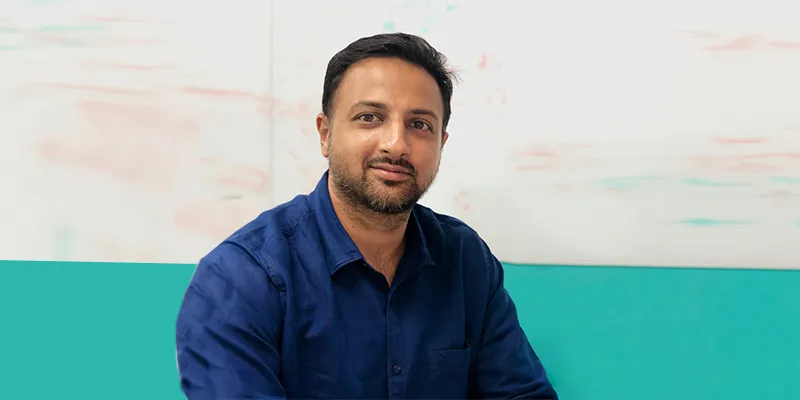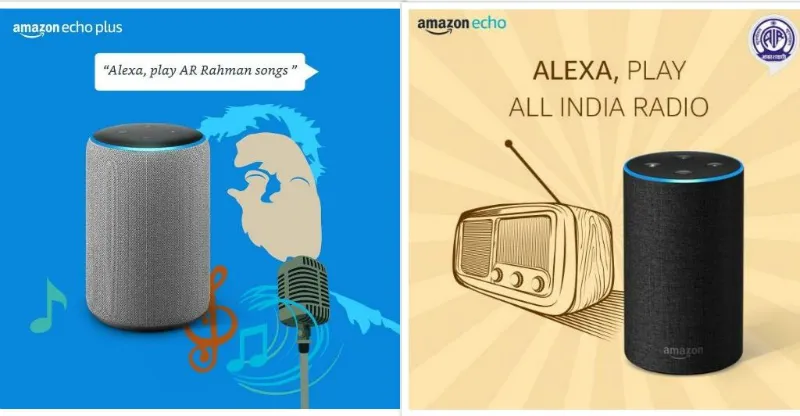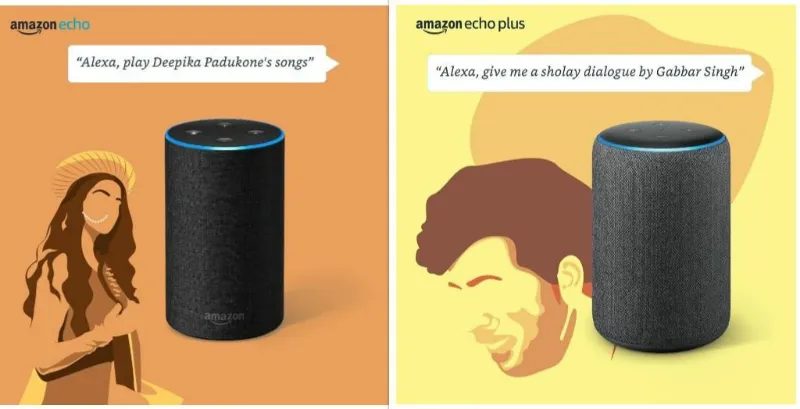A year after Alexa entered India, Amazon is working towards building a deeply local, ‘desi’ version of it
‘Time kya hai, Alexa?’ The AI-powered voice assistant is now acquainted with the quirks, eccentricities and versatility of the Indian market. Amazon believes it is now time to integrate Alexa deeper into the day-to-day lives of Indians.
One of the top challenges global tech companies face in India is localisation - a word that has now come to define the core of their 'India strategy'. Amazon ecommerce, which launched India operations in 2013, succeeded because it managed to decode local buying behaviour at a very basic level.
Now with Alexa, Amazon’s cloud-based AI-powered voice service, it hopes to replicate the success of Amazon.in. The Seattle-based tech giant firmly believes that the Indian voice market is ripe for disruption given 150 million users are estimated to be using voice-enabled assistants by the end of 2019.
It may not be a winner-takes-all market, but the one who speaks to Indians in a language they understand and respects the quirks of the market will stand above the rest. Amazon reckons Alexa is on course to take that pole position.
In just a year of its rollout in India, it has made available over 20,000 Alexa Skills, and has thousands of local developers building voice apps on the platform. But, most importantly, it is the Indian consumer who is giving direction and perspective to the Alexa team by demanding new skills out of them with their unique, unforeseen utterances (questions asked to Alexa).
YourStory caught up with Dilip RS, Country Manager - Alexa Skills, India, to understand Amazon’s vision towards building a deeply local, Indianised Alexa.

YourStory: How has India warmed up to Alexa and what has been the country’s contribution to Alexa’s overall skill growth?
Dilip RS: In any app ecosystem, there are the big enterprise partners, the long tail of developers, and the agencies who are enablers. That is the approach we took in India as well. We looked at things that are of great value to customers.
We started working with brands across verticals - music, radio, news, sports, gaming, kids… and not just national but also local brands. So, we didn’t just have a Times of India or NDTV news flash, we also have a Jagran, a Malayala Manorama, and a Dainik Bhaskar.
Kids emerged as a very important category. Amar Chitra Katha, Chhota Bheem, etc. became very popular on Alexa. Educational content for kids for simple questions on science, maths, vocabulary games, and so on is also popular.
We also looked at utility companies like Dish TV, Vodafone, etc. allowing people to buy recharges or inquire about balance on Alexa. Then radio has been quite big. AIR has launched 17 different stations on Alexa in five English-speaking countries. So, we are not restricting experiences, we are taking them global from India.
Devotion too is a big category here. We realised our customers were asking for chants, discourses, mantras, etc. So, we got Shemaroo to launch devotional skills on Alexa. There is the Ramayan Katha and the Mahabharat Katha narrated by Naseeruddin Shah. We recently partnered with Gaana and Hungama too, and they will soon take their services live on Alexa.

YS: How do you ensure a balance in skills, considering there are diverse age and interest groups to cater to?
DRS: We don’t limit ourselves to any age group. We work with brands that can provide services and use cases for all age groups. The beauty of the Alexa platform is that it is open to all and anyone can build a skill here.
The second pillar of our India story has been the long tail of developers. We don’t tell them what to build. They decide what is best for Indian customers and they build it. One of them has built a voice translator that can converse in 42 different India languages.
Some teachers in the villages of Maharashtra and Andhra Pradesh are using Alexa for kids’ education. This is not something that we have coached them in. They realised the opportunity, and Alexa opened up their ideas and imaginations.
Also Read: Amazon wants to take Alexa to hundreds of third-party devices in India
YS: How is Amazon furthering the interest and excitement which seem to have been entirely organic so far?
DRS: We do invest in this space in the form of developer activities, hackathons, webinars, workshops, etc. We partner with AWS closely and also collaborate with co-working spaces to build more awareness around voice and how to develop a voice ecosystem. We also partner with universities to set up voice labs and appoint student ambassadors and influencers in their campuses. Amazon is trying to make sure that across the spectrum from corporates to developers to hobbyists, people are educated on how to build for voice.

YS: Share with us some interesting use cases where people themselves have taken the Alexa journey ahead.
DRS: The most interesting case was when a 13-year-old student came to one of our developer workshops. He had built a skill to track the BMTC bus service in real time. Now, these are things we cannot imagine or coach them in. And, this is what is happening in India. People are building what they need.
YS: What has India’s Alexa usage been on Echo vis-a-vis non-Echo devices?
DRS: We can’t share numbers. But, we can tell you that we aren’t biased toward Echo customers. All customers are the same and we need to provide everyone with the best experience. All skills are available on all kinds of devices. Unless there is any policy restriction from the developer side, we are very open.
YS: How many third-party partnerships does Alexa have in India?
DRS: There are about eight brands with 13 different devices right now. They have already built stuff for India. We will keep doing more interesting things.

YS: What are the cultural challenges faced by Alexa on a day-to-day basis? Say, in terms of language, a diverse set of customers, surprise utterances that she may not understand?
DRS: We look at these things as opportunities rather than challenges. When we started, Alexa could tell jokes. Then we had customers asking ‘Alexa, tell me a joke in Hindi’ or ‘Alexa, tell me a bedtime story’.
We realised that our customers in India were getting more and more personal and they wanted Alexa to participate in their lives deeper than what we had thought initially. So, we worked with larger external developers who could cater to these requests, and we got these skills built out. Every day, we constantly look out for such utterances so that we can build an experience fundamental to India.
We have just finished one calendar year in India with one cycle of all festivals and events. Every year it changes… this year, we have elections; then there is the Cricket World Cup, the IPL, and multiple things. India is a heterogeneous country. Every 50 km you go, you have a different crowd and a different use case.
Also Read: Mumbai-based Agrahyah Technologies is riding the voice and vernacular wave on the internet
YS: So, how do you strategise leading up to mega-events like the elections, World Cup, etc.? How do you decide what to bet on?
DRS: We can’t comment on the exact events we look at, but like any Amazon service, we work customer-backwards. So, we look at things that pique people’s interest around a certain time. There are elections in April-May that will be of national interest. There is the IPL and World Cup, and all India would be hooked on to it. We also look at festivals like Ganesh Chaturthi and Diwali. Last year, we had a lot of customers asking us, ‘Alexa, play me a firecracker song’ or ‘Alexa, play Ganesh aarti’. We are going to go deeper and richer with these experiences and keep reiterating them.

YS: But the language challenge is real. How do you overcome that and make Alexa understand all of India’s official languages?
DRS: We recognise the fact that vernacular languages are very important. Today we support mixed language utterances, where you can ask things like - Alexa, time kya hai? And she will respond. All our music catalogue from album names to song and movie names are in mixed language, and Alexa does respond.
Further to this, our internal AI team has launched a skill called Cleo that supports 20 Indian languages and provides a gamified experience for customers. So, Alexa will describe how the skill works and ask you for the language you speak. It will tell you how to ask for a movie in Kannada, for example.
Cleo will help Alexa learn how customers across India speak to her, and we will use that data to make skills better for everyone in all languages.
Also Read: How AI-powered voice assistant Alexa is driving Amazon’s revenue growth
YS: Finally, with all the buzz around voice and everyone betting on it, what do you think is the biggest opportunity going ahead? What will be that breakout thing that will disrupt the voice market and accelerate growth? Like Jio did to telecom.
DRS: I think that opportunity opened up in 2018 when we launched Alexa in India. Now, brands and developers just have to make their experiences voice-oriented with our Alexa Skills Kit, and smart APIs. Both companies and the developers are already very excited about voice. Because of the huge internet population. Accenture says 150 million users will be using voice in India this year in the form of a voice assistant. So, whether you say it or not, voice is already here. This is the year when it will take off to new heights.











![[Startup Bharat] Y Combinator-backed BeWell Digital is enabling the digital transformation of radiologists](https://images.yourstory.com/cs/2/40d66ae0f37111eb854989d40ab39087/ImagesFrames31-1648033042143.png)